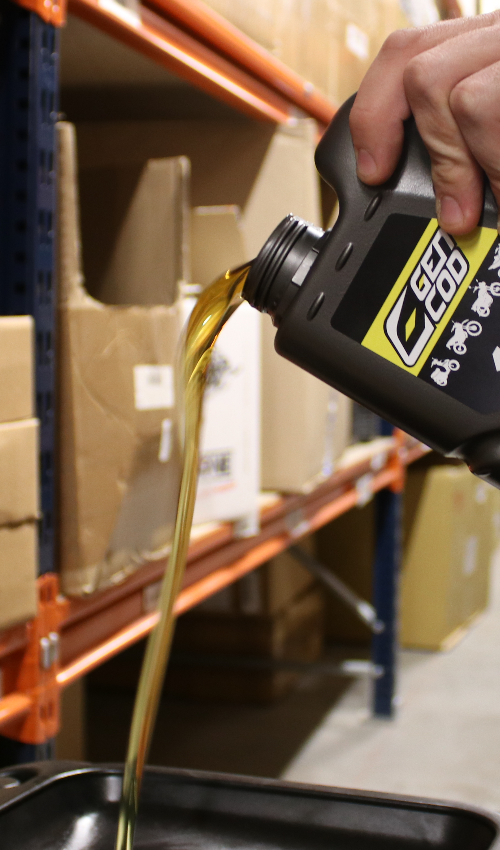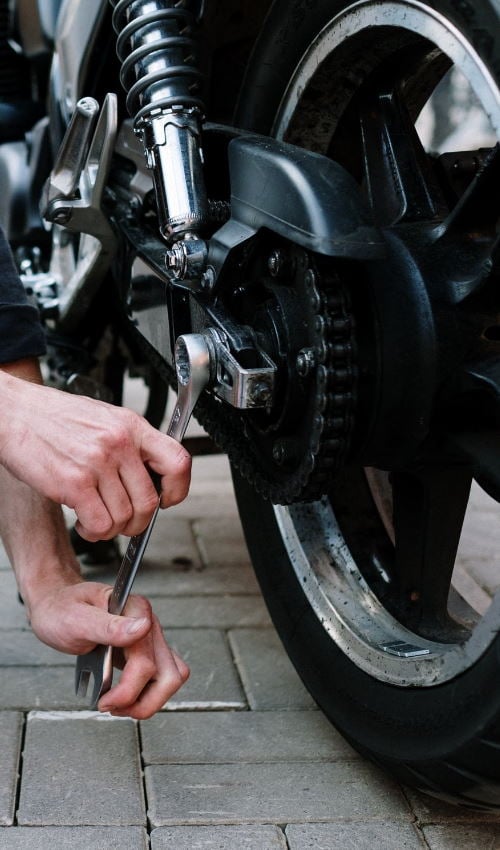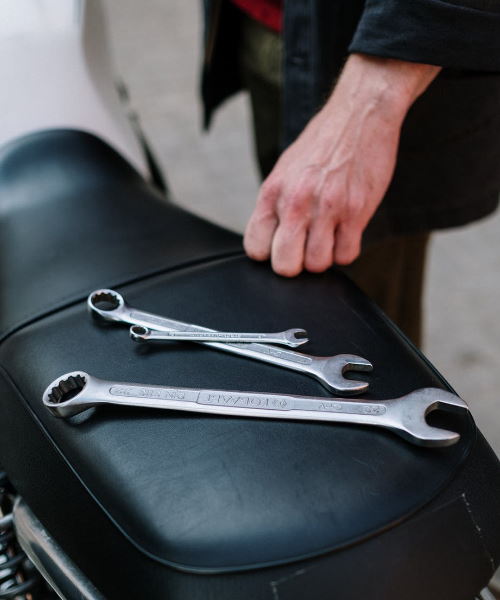Troubleshooting > Failures par brand > SUZUKI > SUZUKI RMX > Simple tips to avoid mechanical problems for my 50cc SUZUKI motorcycle RMX
Simple tips to avoid mechanical problems for my 50cc SUZUKI motorcycle RMX
For daily use or for leisure use, it is strongly recommended that you take the time to check your machine.
There are many riders who could easily avoid small problems by carrying out regular inspection and maintenance.
At the basis of maintenance, reading the user manual of your motorcycle provides all the useful information and gives the maintenance plan for your machine. If you donâ € ™ t have it, (lost instructions, used motorbikeâ € ¦) it is easy to find it online, on the manufacturer's website. Failing that, consult a dealer of the brand.
A few simple tips to avoid mechanical problems with your 50cc SUZUKI RMX
The easiest way is to walk around your bike, looking at it and operating the controls. You put your motorbike on the center stand, go all the way around clockwise starting at par the left side.
1) Preventative maintenance remains the best way to ride safely and reduce the cost of repairs.
Here are some examples of poor maintenance:
- The brake pads worn with the calipers floating on the brake disc.
- air filter clogged or perforated which no longer filters anything.
- undrained oil which has lost all of its lubricating properties.
- brake fluid charged with moisture having lost its compressive capacity - the transmission chain not lubricated and slack.
Preventive maintenance saves on the cost of more serious breakdowns.
2) Close tire monitoring.
Control the your tire pressure at least once par month. An under-inflated tire penalizes road holding, lean in bends and fuel consumption. Check the condition of the tires. When a tire is older than 5 years, or when it is dried out (with cracks in the grooves) it should be changed without hesitation.
3) Checking the brakes.
The brake pads are a consumable to be renewed regularly. Or par ignorance or par For the sake of economy, many motorcyclists neglect the wear of the brake pads of their machine.
4) Inspect your two wheels regularly.
If you drive daily, check every month twice par month your motorbike. If you only ride occasionally, every time you ride.
This check takes a few minutes.
- All lights, bulbs, lights (front and rear), lights dashboard,
- Engine oil level (par porthole),
- Chain tension,
- Brake pads,
- Possible leaks under the engine,
- Tire pressure.
Preventive Maintenance Check Plan for your 50cc SUZUKI RMX
1) Daily checks:
- Fuel level
- Fuel leaks (drips at the level of the fuel hoses and the tap)
- Front and rear brake control
2) Weekly checksmadareas:
- Fluid level (engine oil, brake fluid, etc.)
- Condition of the control cables (accelerator, front brake, clutch)
- Condition of the front and rear tires, inflation pressure, wear and cleanliness
- Lighting, lights, signals, lights, horn
- Starting and idling
3) Monthly checks:
- Chain tension
- Condition of the air filter
- Battery status
4) Half-yearly checks:
- Lubrication of the control cables
- Checking the suspensions
The products to perfectly maintain your SUZUKI boxed 50 motorcycle RMX
The basis of preventive maintenance is the protection of the fragile parts of your motorcycle. Once or twice par year, after a good cleaning, engine stopped and cold, remove the saddle and if possible the tank in order to access the usual inaccessible parts. Spray a protective product (WD 40, Multiprotect by Motul) on all metal and electrical parts of the motorcycle:
- Connectors
- Thread
- The screws of the exhaust
- The articulated parts (pedal, selector, footrest)
These protection products have an insulating, water-repellent and seizing film.
Due to the salt used for snow removal, rims and exhausts oxidize easily. Apply WD 40, grease or oil to the rag to protect them. Be careful not on the brake discs.
For the brake disc fixing screws, apply colorless nail polish as soon as possible. One application each month will prevent rust.
In the absence of protection, metals oxidize and rust, including through chromium. Light alloys need traces white. To protect these alloys, apply polish or spray on a silicone protection product.

Fluid Check For For Your 50cc SUZUKI Motorcycle RMX
1) Engine oil:
The oil level will also need to be checked regularly, especially if your motorcycle's engine is cooled down.ar air; in fact this type of engine tends to consume oil. Remember to wait a while after switching off the ignition, giving the oil time to fall back into the sump.
2) Can oil:
On almost all motorcycles, the gearbox is lubricated epar engine oil. This is not the case for European motorcycles before 2010.
3) Coolant:
The level of the liquid used to cool the engine varies little in principle. Even if it has not gone down, that does not exempt the verification; in fact, over time, the liquid loses its qualities and is less resistant to cold. To check the level, just look at the mark on the expansion tank.
Examine the cooling system hoses for any leaks or signs of fatigue. If the top-up is necessary, only open the jar when the engine is cold, otherwise it could be burnt.
A system drain will be performed every three years, removing the drain plug which is usually located at the bottom of the engine on the water pump body.
4) Brake fluid:
The level drops with wear of the pads. The jar normally contains enough product for the lifetime of the pads and does not need to be topped up. A very low level indicates end of life pads or a leak. The fluid level should be checked at least once par week.
Brake fluid loses its qualities quickly. It will have to be renewed, replaced regularly (ideally every year). If during your check the brake fluid has deteriorated (color change), drain and replace the brake fluid. If, when applying the brakes, the control is soft or spongy, the circuit needs a bleed.
All of the hoses of the brake system must not show any cracks, leaks or damage.race wear par chafing or swelling. Any sign of deterioration means the hose should be replaced immediately. Never postpone this operation.
The control cables brakes will also be examined, they must be properly greased and must not show any deterioration.
Check out all our written tutorials that will help you in your maintenance or when replacing parts. Remember to refer to our guides and our advice such as "How to choose the right brake pads" and "choose the right brake fluid ".













